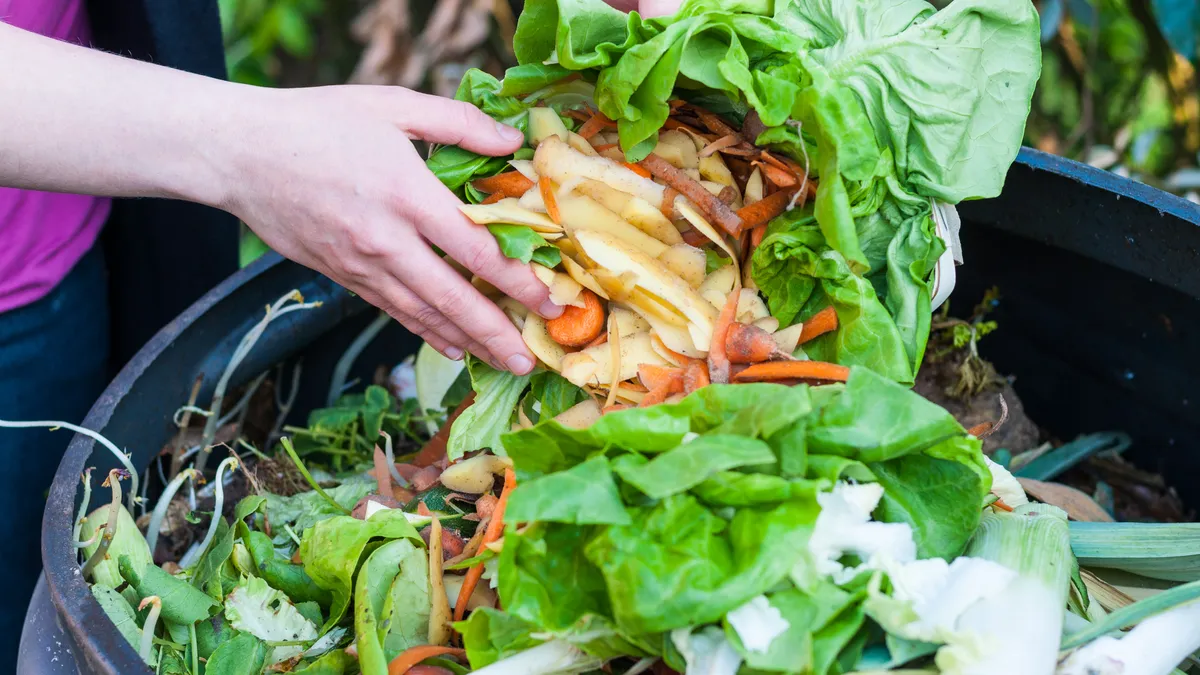Dive Brief:
- The United States generated about 88.7 million tons of surplus food in 2022, according to the latest data update from the nonprofit ReFED. The organization updated its Insights Engine in December.
- The updated data indicates U.S. residents wasted about 349 pounds of food per person last year. That's down from the peak in 2021, but it represents a 5% increase in wasted food per capita since ReFED's 2016 baseline. The U.S. still remains far behind its target of achieving 164 pounds of wasted food per person annually by 2030.
- About 36.7% of all surplus food was landfilled in 2022, increasing over the prior year for the third straight year. Meanwhile, ReFED estimates that 11% of food is “channeled back into the human food supply chain.”
Dive Insight:
ReFED uses information from dozens of sources to compile its annual data, which is broken down across the food supply chain and surplus food destinations. The nonprofit also estimates the greenhouse gas emissions resulting from surplus food, and it found that in 2022 such emissions declined by 0.5% over the previous year.
While ReFED estimates that 93% of surplus food emissions come from “upstream” activities like production, processing and transportation, it did find that a large proportion of such food ends up in disposal. In 2022, 32.6 million tons of surplus food was landfilled, per the nonprofit’s analysis.
Meanwhile, 16.2 million tons of surplus food was composted, 4.27 million tons of surplus food was incinerated and 1.1 million tons of surplus food was anaerobically digested, proportions that are roughly in line with the previous year’s data.
The EPA recently created a new Wasted Food Scale to provide food industry stakeholders with clearer priorities regarding surplus food destinations. The scale, which replaced the agency’s food recovery hierarchy, used new lifecycle assessments and took a closer look at anaerobic digestion. It ranked the technology just below composting as a food management pathway as long as the digestate or biosolids are beneficially used.
The scale also renewed the EPA’s emphasis on source reduction or other means of keeping surplus food out of pathways traditionally handled by the waste industry. ReFED’s data update shows surplus food most often goes to the EPA’s least favored food waste management pathways — food waste donation practices handled the least surplus food, while methods like landfilling, sewer disposal, incineration and “dumping” handled the most.
In a statement announcing the new scale, EPA Administrator Michael Regan called wasted food “a major environmental, social, and economic challenge.” At the time, ReFED Executive Director Dana Gunders called the report accompanying the new scale “thorough and thoughtful” and offered praise for the agency’s more detailed recommendations on source reduction.
The nonprofit has continued to promote best practices to reduce surplus food since the EPA report’s release in October. It joined other nonprofits, grocers and food manufacturers in launching the U.S. Food Waste Pact in December, and it continued to advocate for U.S. leadership on food loss and waste reduction during COP28.












